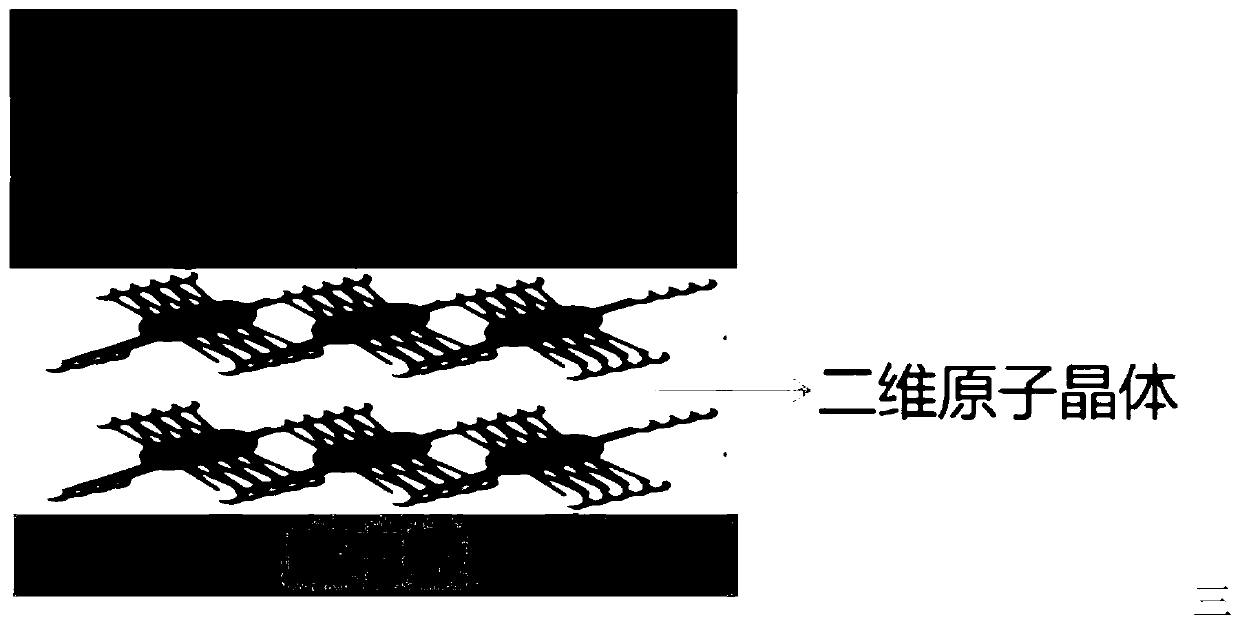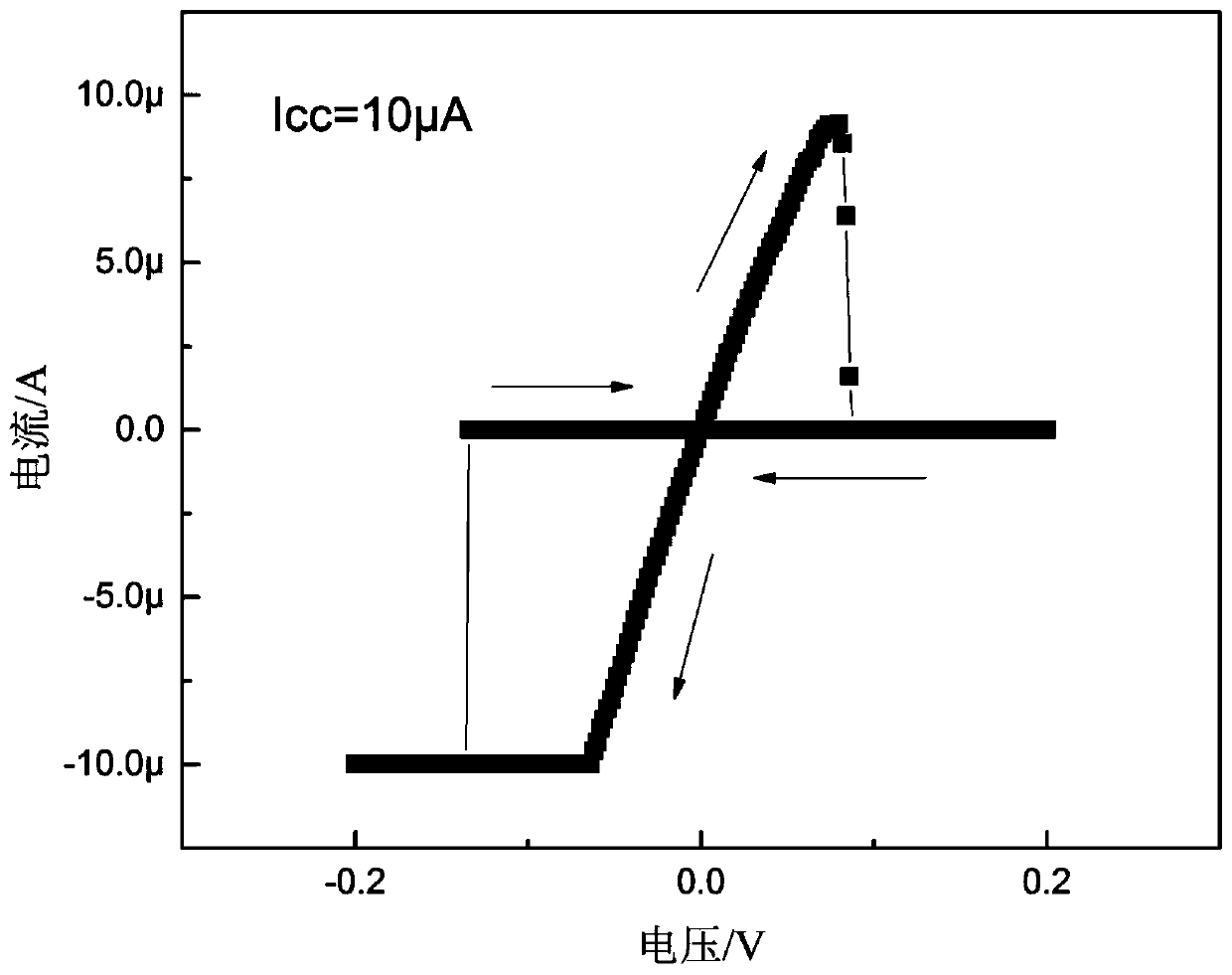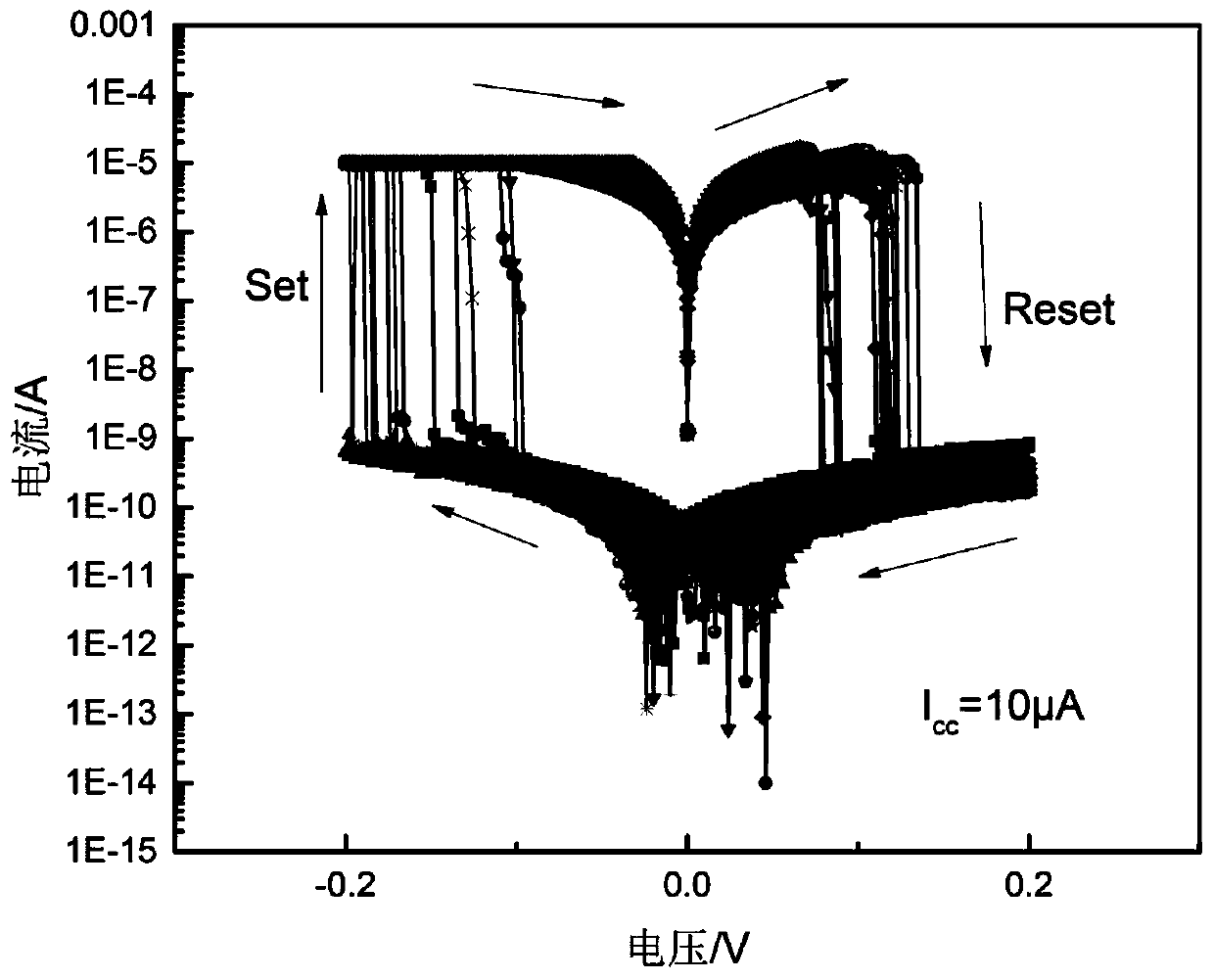Interface type atomic memristor and preparation method thereof
A memristor and interface technology, applied in the field of microelectronics, can solve problems such as complex operation, high power consumption, and poor consistency, and achieve the effects of improving consistency, low power consumption, and reducing defects and vacancies
- Summary
- Abstract
- Description
- Claims
- Application Information
AI Technical Summary
Problems solved by technology
Method used
Image
Examples
preparation example Construction
[0063] The preparation method of another interface-type atomic memristor based on a two-dimensional atomic crystal comprises the following steps:
[0064] 1) Prepare graphene or other semi-metallic two-dimensional atomic crystal materials by mechanical exfoliation or chemical vapor deposition;
[0065] 2) Using ultraviolet lithography or electron beam lithography to prepare and design the shape of the bottom electrode of graphene or other semi-metallic two-dimensional atomic crystal materials on the substrate;
[0066] 3) Using an etching process to etch away excess graphene or other semi-metallic two-dimensional atomic crystal materials;
[0067] 4) Two-dimensional atomic crystal materials are prepared by mechanical exfoliation, chemical vapor deposition (CVD), chemical vapor transport (CVT), molecular beam epitaxy (MBE) or laser thinning;
[0068] 5) Surface oxidation treatment of two-dimensional atomic crystals is carried out by means of oxygen ion treatment, natural oxida...
Embodiment 1
[0088] 1) Preparation of gold-bottom electrodes: Firstly, spin-coat a layer of AZ5214 photoresist on the substrate with a coater at 1500 rpm for 15 seconds and at 4000 rpm for 30 seconds, and expose the strip-shaped electrodes with a photolithography machine. Electrode pattern (the line width is about 3 μm), the pattern is developed with a developer, and then a 30nm gold electrode is grown on the substrate by means of electron beam evaporation, and finally put into acetone, alcohol and deionized water respectively to remove excess photoresist .
[0089] 2) Preparation and transfer of hafnium diselenide dielectric: the hafnium diselenide film was peeled off to SiO by mechanical stripping 2 / Si substrate surface, the thickness of the film is about 20nm, and then the hafnium diselenide is surface treated by the oxygen ion treatment method, and the thickness of the oxide layer is about 5nm.
[0090] 3) Transfer the hafnium diselenide thin film on the substrate to the gold bottom ...
Embodiment 2
[0099] 1) Preparation of gold-bottom electrodes: Firstly, spin-coat a layer of AZ5214 photoresist on the substrate with a coater at 1500 rpm for 15 seconds and at 4000 rpm for 30 seconds, and expose the strip-shaped electrodes with a photolithography machine. Electrode pattern (the line width is about 3 μm), the pattern is developed with a developer, and then a 30nm gold electrode is grown on the substrate by means of electron beam evaporation, and finally put into acetone, alcohol and deionized water respectively to remove excess photoresist .
[0100] 2) Preparation and transfer of titanium diselenide dielectric: peel off the titanium diselenide film to SiO2 by mechanical stripping 2 / Si substrate surface, the thickness of the film is about 20nm, and then the titanium diselenide is surface treated by surface oxidation treatment.
[0101] 3) Transfer the titanium diselenide thin film on the substrate to the gold bottom electrode prepared in step 1).
[0102]4) Preparation o...
PUM
| Property | Measurement | Unit |
|---|---|---|
| Thickness | aaaaa | aaaaa |
| Thickness | aaaaa | aaaaa |
| Thickness | aaaaa | aaaaa |
Abstract
Description
Claims
Application Information
 Login to View More
Login to View More - R&D
- Intellectual Property
- Life Sciences
- Materials
- Tech Scout
- Unparalleled Data Quality
- Higher Quality Content
- 60% Fewer Hallucinations
Browse by: Latest US Patents, China's latest patents, Technical Efficacy Thesaurus, Application Domain, Technology Topic, Popular Technical Reports.
© 2025 PatSnap. All rights reserved.Legal|Privacy policy|Modern Slavery Act Transparency Statement|Sitemap|About US| Contact US: help@patsnap.com



